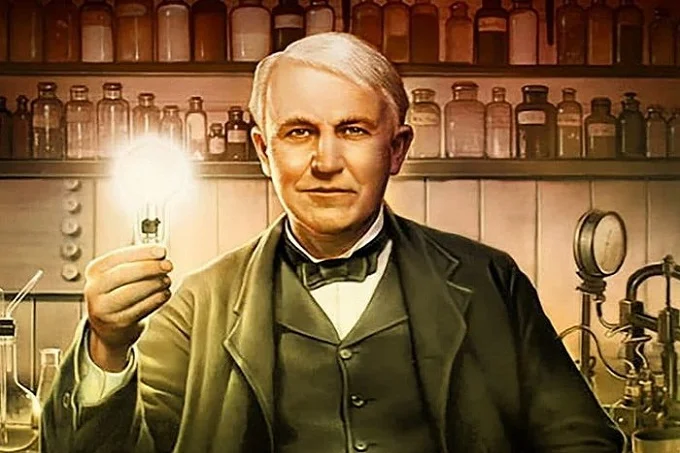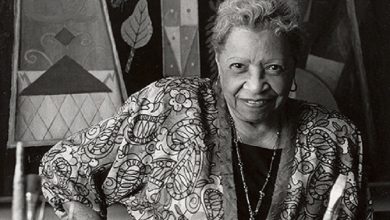How Edison’s stupid joke led to the ‘War of currents’ between him and Tesla

Thomas Edison and Nikola Tesla were geniuses of their time. They gave humanity electric lighting. Only they had completely different approaches. One idea, one goal, and different results. It is not surprising that a conflict and a struggle for customers arose between the two scientists, which was later called the “War of currents”. But the confrontation began with an unsuccessful joke.
Thomas Edison, inventor of the light bulb
The 19th century gave humanity a lot of geniuses. It was an exciting period full of scientific advances, and the rapid development of capitalism and the industrial revolution only spurred the struggle and clashes between various ideas and patents.

Thomas Edison is widely recognized as one of the most prominent inventors in the history of the United States and the whole world. Unlike Tesla’s dreamer, he was not only an indisputable genius in the laboratory but also an utterly ruthless businessman who, first of all, sought to make money from his inventions. In the United States alone, more than 1,000 patents have been issued in his name.
Born at the height of the Industrial Revolution in 1847, Edison was part of a new wave of scientists and inventors who paved the way for the modern era. His renowned research laboratory in Menlo Park, New Jersey, developed innovations that still underpin much of today’s industrial and consumer infrastructure, including the phonograph (apparatus for recording and reproducing sound), motion pictures, and the light bulb.
His achievements in the scientific field reached such heights and recognition that the city, in which the laboratory was previously located, now bears his name. Thomas Edison wanted to establish a connection with the dead with the help of a “Duhphone”.
His selfishness and self-confidence were justified to some extent. He was practically a monopoly in his field, and few could compete with the demanding genius. In 1879, Edison introduced the incandescent light bulb. Intending to present his invention to every home in the country, he began researching a system that would supply energy to illuminate America.
Nikola Tesla, poor Serbian genius

Born in Serbia, Tesla was a genius of a different kind. While Edison was a perpetual experimenter and master, Tesla was a human calculator, and his ability to mentally solve complex mathematical and physical equations helped him achieve early career success in Europe. Tesla was full of enthusiasm, he could invent something for months, just to see what would come of it.
Tesla worked as an electrical engineer at the Budapest telephone exchange. A year later, he left for Paris to become an employee of Continental Edison, an offshoot of the inventor’s successful American business. He saw all the disadvantages of direct current and became one of the adherents of the idea of finding an alternative.
In 1882, Tesla suddenly dawned on the solution to the engineering part of the problem. His ability to visualize complex mathematical equations and the internal structure of mechanisms came in handy when Tesla came up with the alternator.
It became something of an obsession for him. His boss was transferred to the American branch, and he invited Tesla to go with him. The journey was difficult, and during the mutiny on the ship, all of Nikola’s belongings were stolen. However, he considered it an acceptable price for the opportunity to work for Thomas Edison himself.
Tesla was in awe of his new boss. Edison’s discoveries and grip fascinated him. Nikola has been recruited to work on a variety of projects, including repairing the Oregon power system, the first steamboat with electricity, assembling DC generators, and more.
“War of Currents,” silly jokes and the breakdown of relations between Tesla and Edison
At that moment, electricity began to light up the streets of cities around the world. At first, most cities used high-voltage arc lamps to illuminate the night sky, but this was very dangerous. Arc lighting was fueled by power plants that delivered over 3,000 volts at a time, often resulting in sparks, overheating, and explosions in public places, and regular fires.

After eight years of testing and experimentation, Edison came up with a solution – a direct current to supply 110 volts to the power grid. It was supposed to be an ideal replacement for the power of steam engines and reduce the risk of accidents. His invention was greeted with applause and delight. However, numerous shortcomings soon became apparent.
Energy only flowed in one direction, and the wires often melted. The system did not allow energy transmission over distances of more than 1-2 km, so generators had to be installed literally at every corner of the city. As a result, the New York sky was littered with thick copper wires.
Tesla has repeatedly stuttered about the benefits of alternating current. Perhaps Edison admitted that the Serbian inventor was correct, but such innovation was categorically unprofitable for him. He spent hundreds of thousands on the design and installation of DC lines. This brought him huge profits. And to start rebuilding everything anew only because of some kind of calculations, albeit a talented, but simple worker?
However, Edison recognized the need to refine the dynamo, which he instructed Tesla to do. Moreover, he even promised to pay 50 thousand dollars in bonus for a good job, an incredible sum by the standards of that time. Tesla accepted the challenge and enthusiastically plunged into the calculations. He presented several working options for restructuring and already mentally planned out what new projects and equipment he would spend the prize on.
Edison was delighted with Nicola’s proposal and immediately put the car into production. But he was not going to pay anything to anyone. In response to Tesla’s offended bewilderment, Edison said that the emigrant was still not used to the realities of the United States and did not understand American jokes at all. This infuriated Tesla so much that he quit, loudly slamming the door goodbye.
Tesla sold patents to Thomas Edison’s main competitor
Tesla only worked for Edison for about six months. During this time, he managed to make a name for himself in scientific circles. Many investors are interested in financing his work. The very creation of a new electricity generator did not take him long.
In the spring of 1888, he received seven separate patents for various parts of the movement. And he sold them to George Westinghouse, Edison’s main competitor in the race to supply cities with electricity. The race between alternating and direct current was constantly escalating; between the two inventors, literally, sparks flew at each meeting.
Edison did everything possible to discredit a competitor. He filled the city with posters warning of the dangers of alternating current and traveled through the cities, making presentations with the electric punishment of animals, assuring that such a fate awaits all users of Tesla’s invention.
The confrontation ended at the 1893 Chicago World’s Fair. Edison and Tesla were asked to develop a lighting scheme for 20 thousand bulbs. Edison said that he needed a million for such a project, and Tesla modestly asked for half of that. In addition, Tesla’s layout was much more aesthetically pleasing – if DC was used, the entire territory of the fair would have to be braided with wires.
Tesla demonstrated the beauty and power of his alternating current time and time again, making sparks jump from his fingers. Edison also showed off his own lighting option, albeit with worse luck: all the bulbs were barely lit.
Tesla died almost penniless, although this had nothing to do with Edison. He made a fortune from his contracts with Westinghouse but lost it all due to lack of business acumen, poor investment, and the expense of grandiose experiments that failed.
Thomas Edison made a fortune on patents alone, of which there were already more than 3000 by the end of his life. Even if he had not invented or modernized anything, only these payments would have sufficed him for 1-2 centuries of a comfortable life. Still, Thomas Edison was one of those people who managed to withstand and not abandon the goal after the first failure.




